#Pavol Jozef Šafárik
Explore tagged Tumblr posts
Text
Niečo málo o Černobohovi
youtube
Ďurov besovský boh, strážca krvavého ohňa, pán záhrobnej svorky vlkov, hrubá záplata na hrubé vrece nepriateľských potvor a zvrhlých božských súrodencov je postavička... Kontroverzná.
* Prvá zmienka je datovaná do 12. storočia a v oblasti Polabských Slovanov ju zaznamenal saský kňaz Helmold Bosau v Chronica Slavorum (Kronika Slovanov).
"Slované mají také [jednu] zvláštní pověru: při hostinách a pitkách nechávají kolovat misku, nad níž pronášejí slova – a nemůžu říci, že slova posvěcení, nýbrž znesvěcení[pozn. 1] – ve jménu bohů dobrých i zlých, protože vyznávají že všechen zdar a štěstí řídí dobrý bůh, zlý bůh pak všechno neštěstí. Proto také zlého boha svým jazykem nazývají „ďábel“ či „Černoboh“, to jest černý bůh." (Citát z wiki)

Saské pokresťančovanie týchto nespratných susedov prebiehalo už od druhej polovice 10. storočia a výklad videného pochádza od predstaviteľa v podstate cudzej okupačnej sily, takže je otázne nakoľko ide o predstavu pôvodnú a nakoľko o kríženca kresťanského dualizmu dobro-zlo s domácimi tradíciami. Je dôvod domnievať sa, že ani nešlo o boha, ale skôr o stelesnenie smoly lepiacej sa na päty.

* Niekedy ešte býva stotožňovaný s Čiernohlavom - Tjarnoglófim zo ságy Knýtlinga z 13. storočia, ktorá okrem dejín dánskych vladárov spomína aj jedno z posledných slovanských svätíšť na Rujáne a miestne modly.
"The fifth god was called Pizamar from a place called Jasmund, and was destroyed by fire, There was also Tjarnaglófi, their god of victory who went with them on military campaigns. He had a moustache of silver and resisted longer than the others but they managed to get him there years later. Altogether, they christened five thousand on this expedition. (Citát z wiki)
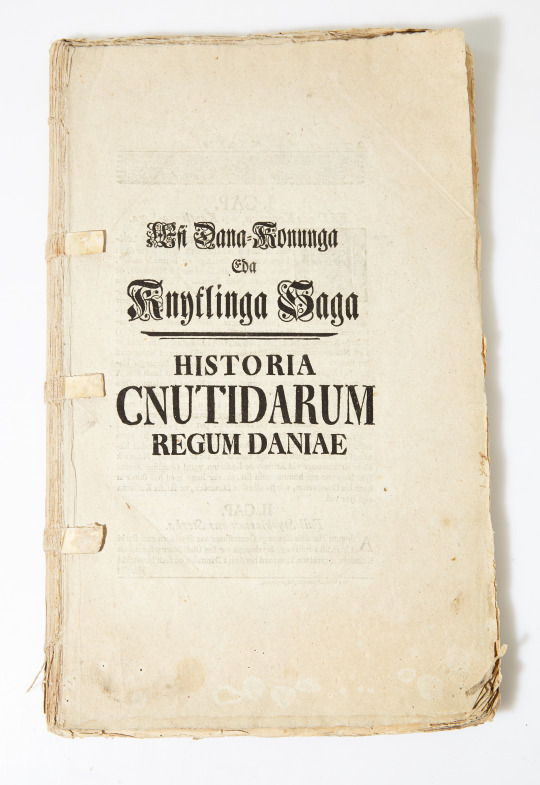
Nevraví nám o ňom ktovieako veľa - boh víťazstva, modla so striebornou bradou nosená do boja, zničeniu vraj odolával dlhšie ako iní. A čo sa akademických úvah o Tjarnoglófim týka, sú rôznorodé - iná podoba Triglava, Jarovíta, Perúna, alebo dokonca na základe porovnávania "tjarn" so slovom "tŕň" aj nositeľ tŕňovej koruny istého Nazaretského synkreticky šprajcnutého do predstáv o domácich ochrancoch pred dobyvateľmi.
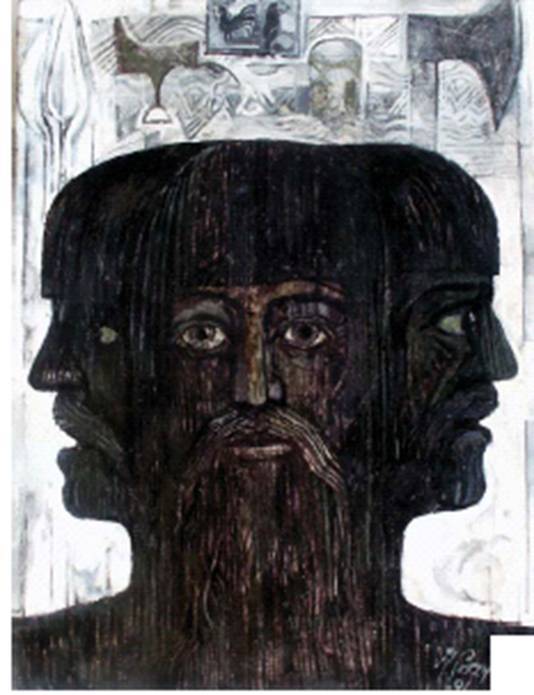
K slovu sa dostala aj archeológia a Čierny sa ako vojnové božstvo vyskytol ešte inde. * Ján Kollár - kňaz, básnik, jazykovedec a snaživý (ikeď nie až tak exaktný) historik v 19. storočí účinkujúci uprostred vzmáhajúcich sa nacionalistických pretekov o to, čí národ bol najsamprvý, najkultivovanejší a na aké územia a úctu má nárok, si v ňom našiel dávnovekého burcovateľa slovanskej bojovnosti v obrane pred kresťanstvom násilne vnucovaným z Nemeckých zemí. Zložil o ňom aj pár veršov v Slávy dcére.

Jeho nález z Babenbergu, ktorým svoje úvahy podkladal, však dopadol neslávne. O starých sochách pred chrámom sv. Petra a Juraja na Michalskej hore sa tradovala legenda, že sú obývané zlovoľnými duchmi, čo kedysi po nociach sabotovali snahy stavbárov vztýčiť tamojší svätostánok (spoiler - vyhrali stavbári a kostol stojí). Keď na nich Kollár s mladomanželkou zbadal ryhy pripomínajúce písmená, nadchol sa myšlienkou, že by mohlo ísť o slovanské runy. A tak sa v 30. rokoch 19. storočia zrodil príbeh o Černobohových levoch, modlách odcudzených vierozvestcom Otom Bamberským. Zlanáril naň aj (o poznanie profesionálnejšieho) Pavla Jozefa Šafárika a táto správa dorazila až do intelektuálnych kruhov v Rusku. Hypotéza dostala trhliny, keď jeden poľský bádateľ na sochách našiel nápis Wallhalah (germánske sídlo bohov a záhrobie pre vyvolených bojovníkov) a definitívne sa zrútila, keď sa usúdilo, že sa to len nejaký okoloidúci na pamiatku podpísal (!!!a preto sú bytostne dôležité knihy návštev!!!) a/alebo poveternostné živly dali naštrbenej hornine zabrať. Viac na - https://historylab.dennikn.sk/dlhe-19-storocie/omyl-jana-kollara/

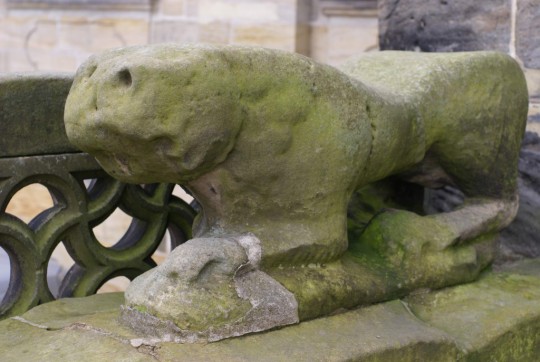

* Podobne obišiel aj Kollárom inšpirovaný nešťastník od Skalska, Václav Krolmus - kňaz, zberateľ etnológ a priekopník terénnej archeológie v zemi koruny českej.

Ten sa v 50. rokoch 19. storočia nádejal, že v pivnici Josefa Kabeša našiel runový kameň podľa nápisu vyzerajúceho ako výraz "raksa" zasvätený raráškovi a tým pádom indickému rákšašovi (indoeurópanizmus a Slovania, veľká téma, veľa hľadania starých vzájomností), prípadne ešte aj blízkovýchodnému Baalovi. O nález sa so širšou verejnosťou podelil v Poslední božiště Černoboha s runami na Skalsku, v kraji Boleslavském, v Čechách. Odhalenia, že ide o komoru z obdobia renesancie a pukliny v jeho kameni sú prirodzeného pôvodu, sa už nedožil. Lokalita však bola osídlená už v praveku a je zdrojom rôznych nálezov.
Viac na - https://isad.npu.cz/obec-skalsko-2218 https://sever.rozhlas.cz/vaclav-krolmus-romantik-s-motyckou-7795354?fbclid=IwZXh0bgNhZW0CMTAAAR3YhLLQPvdhK6afdIW8lcGYH6qzfmWybwmqSuzdXTN0114oKHM2OzbH5nc_aem_AY33qemnq9YY0C1Ye3A--g2r6saU2dNEZPg61kxvhA-1WpSjtZy7kynU-Q_Zsp_dbsbDF345SO_dLkcLWBSeMCUl

* Mytológia, aj tá prežívajúca vo fikcii a popkultúre miesto praktizovanej viery, je však živý proces. Sútok nespočta potôčikov, divoké riečište s množstvom bočných ramien, prúd podzemnej vody tu tryskajúci na povrch, tam zase miznúci v skrytých hlbinách, spenená riava meniaca svoje koryto podľa ľubovôle, chutiaca všetkým možným, o čo sa obtrela. Každá komunita a každá generácia s ňou nakladá trochu inak. Podľa toho, čo rezonuje v ich životoch, čo zisťujú o okolitom svete, čo sa snažia dosiahnuť. Môžeme si zakladať na presnosti toho ktorého zaznamenaného prerozprávania, hľadať pramene toho ktorého prvku, body styku s inými vplyvmi, prirodzené prekážky, čo zmenili jej tok. A môžeme samozrejme aj razantne kritizovať tú ktorú verziu a jej mieru nadväznosti, či výživnosť, môžeme jej konkurovať vlastným výkladom. Ale nemôžeme ju zahatať a zmraziť. Či už bol Černoboh len slovným obratom, modlou celkom iného boha, alebo faktickou entitou na prelome pohanstva a kresťanstva, postupne sa stal aj čímsi ďalším. A Ďurov príspevok do všeobecného povedomia je dosť slušným základom pre ďalšie zaujímavé zákruty.
Nech teda oheň na Kančej hore planie vytrvalo a vytie vlčích besov znie doďaleka.

#juraj červenák#Černokňažník#Černoboh#Ján Kollár#Pavol Jozef Šafárik#Václav Krolmus#Babenberg#Skalsko#archeology#history#early medieval#late modern#high medieval#Chronica Slavorum#Knýtlinga saga#Czarnobog#Czarnoglav#Tjarnoglófi#Slovanská mytológia#music#Slavic mythology#Slovanskí bohovia a bytosti#Slavic deities#essay?#zamyslenie#sa mi to čertovsky natiahlo#Youtube
1 note
·
View note
Text



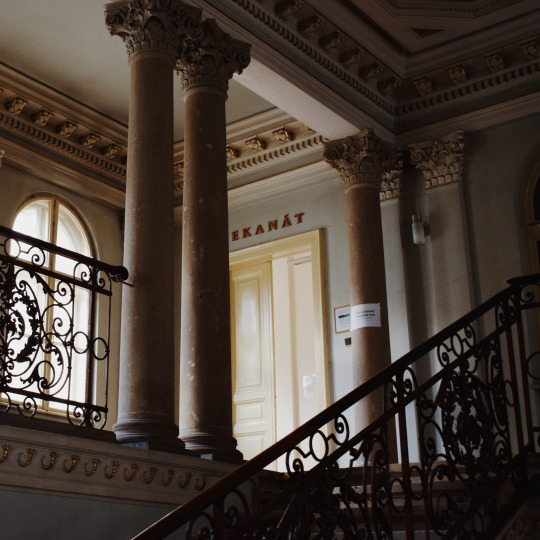
Pavol Jozef Šafárik University in Košice, Slovakia
#my uni#architecture#da#dark aestetic#dark academia#university#college#photopgraphy#my photos#statue#aesthetic#art#the secret history#tsh#UPJŠ#upjs#Pavol Jozef Šafárik University
4K notes
·
View notes
Text
Phôi khủng long 80 triệu năm tuổi chứa hộp sọ nguyên vẹn

Các nhà cổ sinh vật học phát hiện phôi hóa thạch hiếm của một loài khủng long chân thằn lằn sống trong kỷ Phấn Trắng.
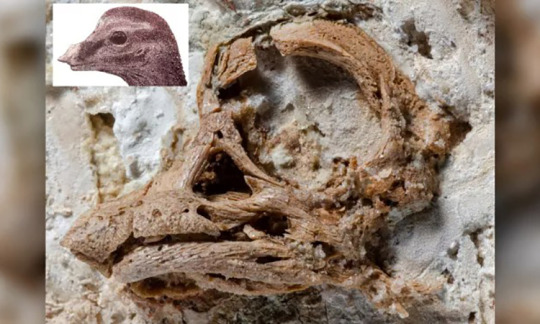
Hộp sọ phôi khủng long được bảo quản bên trong trứng hóa thạch. Ảnh: Kundrát M. et al.
Mẫu vật bao gồm một hộp sọ nguyên vẹn dài 3 cm được xác định thuộc về chi khủng long ăn thực vật cổ dài Titanosaurus, bao gồm những loài khủng long lớn nhất từng tồn tại như Patagotitan, có thể phát triển tới chiều dài 37 m và nặng 69 tấn.
Theo nhà cổ sinh vật học tự do Terry Manning, đồng tác giả của nghiên cứu, hóa thạch được khai quật ở Argentina và sau đó bị buôn lậu sang Mỹ. Manning đã may mắn sở hữu phôi khủng long Titanosaurus đặc biệt này sau một cuộc đấu giá ở thành phố Tucson, bang Arizona.
"Đây là một trong những hộp sọ khủng long đẹp nhất được tìm thấy bên trong trứng. Do có kích thước nhỏ và cấu trúc xương mềm, chúng có xu hướng bị vỡ hoặc bị nghiền nát. Hộp sọ phôi khủng long còn nguyên vẹn như vậy là rất hiếm", Phó giáo sư Darla Zelenitsky tại Đại học Calgary của Canada nhấn mạnh.
Nhóm nghiên cứu nhận thấy hộp sọ của Titanosaurus ở giai đoạn phôi có một điểm khác biệt lớn so với con trưởng thành, đó là một chiếc sừng nhỏ trên mõm giống như tê giác. Theo trưởng nhóm nghiên cứu Martin Kundrát từ Trung tâm Sinh học Liên ngành (CIB) thuộc Đại học Pavol Jozef Šafárik ở Slovakia, những con khủng long non có thể đã sử dụng bộ phận này để làm vỡ vỏ trứng và chui ra ngoài.
Bằng cách so sánh sự phát triển của vỏ não với phần còn lại của hộp sọ, nhóm nghiên cứu cho biết phôi khủng long được phân tích đã trải qua 4/5 quá trình phát triển, hay nói cách khác, trứng đã gần nở.
Khi phân tích vỏ trứng, Kundrát cùng các cộng sự còn tìm thấy những vết lõm lớn hợp nhất với phần còn lại của màng sợi, một cấu trúc giúp phôi hấp thụ canxi. Đây là bằng chứng đầu tiên cho thấy phôi khủng long Titanosaurus hấp thụ canxi từ vỏ trứng, điều cũng được quan sát thấy ở các loài bò sát hiện đại.
Chi tiết nghiên cứu đã được xuất bản trên tạp chí Current Biology. Hóa thạch phôi hiện được trưng bày tại Bảo tàng Carmen Funes Municipal ở tỉnh Neuquen, phía tây Argentina.
Đoàn Dương (Theo Livescience)
from Tin mới nhất - VnExpress RSS https://ift.tt/3m6VcrM via IFTTT
0 notes
Text
FossilWatch: Stats, sex, skulls and sleep
Sleeping through tough times
US scientists have discovered fossil evidence of a hibernation-like state in an animal that lived in Antarctica during the Early Triassic, some 250 million years ago.
It is the oldest such find, they say, and suggests that torpor – a general term for hibernation and similar states in which animals temporarily lower their metabolic rate to get through a tough season – arose in vertebrates even before mammals and dinosaurs evolved.
The creature, a member of the genus Lystrosaurus, was a distant relative of mammals.
It spread across Earth’s then-single continent, Pangea, and fossils have been found in India, China, Russia and Africa, as well as Antarctica, which at the time experienced extended periods without sunlight each winter.
Life restoration of Lystrosaurus in a state of torpor. Credit: Crystal Shin
“Animals that live at or near the poles have always had to cope with the more extreme environments present there,” says lead author Megan Whitney. “These preliminary findings indicate that entering into a hibernation-like state is not a relatively new type of adaptation. It is an ancient one.”
Whitney carried out the work while at the University of Washington, with then colleague Christian Sidor. Their findings are published in the journal Communications Biology.
Lystrosaurus had no teeth but bore a pair of tusks in the upper jaw, Witney says, which made their study possible. As in elephants, the tusks grew continuously, so cross-sections of fossilised tusks provide information about metabolism, growth and stress or strain.
The researchers compared tusks from six Antarctic Lystrosaurus and four from South Africa and noticed similar growth patterns but one key difference: closely-spaced, thick rings that likely indicate periods of less deposition due to prolonged stress.
“The closest analogue we can find to the ‘stress marks’ that we observed… are stress marks in teeth associated with hibernation in certain modern animals,” Whitney says.
The face of a dinosaur embryo
The first dinosaur embryos were found in a nesting ground of titanosaurian at Auca Mahuevo in Argentinian Patagonia. Two decades later, an international research team has described the first near-intact embryonic skull.
A magnified perspective of the Titanosaurian embryonic skull and a skull reconstruction. Credit: Kundrat et al
The findings, published in the journal Current Biology, suggest that sauropod dinosaurs, a group characterised by the long neck and tails and small heads familiar in the Brontosaurus, may have had specialised facial features as hatchlings that changed as they grew into adults.
“The most striking feature is head appearance, which implies that hatchlings of giant dinosaurs may differ in where and how they lived in their earliest stages of life,” says lead author Martin Kundrat of Pavol Jozef Šafárik University, Slovak Republic.
“But because it differs in facial anatomy and size from the sauropod embryos of Auca Mahuevo, we cannot rule out that it may represent a new titanosaurian dinosaur.”
Kundrat’s team used an imaging technology called synchrotron microtomography to study the inner structure of bones, teeth and soft tissues of the embryonic dinosaur and found hidden details, including tiny teeth preserved deeply in tiny jaw sockets.
The specimen also is from Patagonia, although its precise origin isn’t known. It was illegally exported and came to researchers’ attention only later. It’s now housed with other embryos from Auca Mahuevo at Argentina’s Museo Municipal Carmen Funes.
Thinking about dinosaur sex
Speaking of dinosaurs, how do you tell boys from girls? The answer may be to use stats.
In a new paper in the Biological Journal of the Linnean Society, scientists led by the Field Museum, US, explain how a different kind of analysis can estimate the degree of sexual variation in a dataset of fossils.
“It’s a whole new way of looking at fossils and judging the likelihood that the traits we see correlate with sex,” says lead author Evan Saitta. “This paper is part of a larger revolution of sorts about how to use statistics in science but applied in the context of palaeontology.”
Palaeontologists have previously used significance testing, where you collect all your data points then calculate the probability that those results could have happened by pure chance rather than an actual cause. This sometimes works for big, clean datasets, Saitta says, but “with a lot of these dinosaur tests, our data is pretty bad”.
He and his colleagues turned to effect size statistics, which attempts to estimate the degree of sex differences and calculate the uncertainty in that estimate. This approach takes natural variations into account without viewing dimorphism as black-or-white. Many sexual dimorphisms can be subtle.
“We showed that if you adopt this paradigm shift in statistics, where you attempt to estimate the magnitude of an effect and then put error bars around that, you can often produce a fairly accurate estimate of sexual variation even when the sexes of the individuals are unknown,” says Saitta. The work continues.
Old fossil adds to old debate
US and Canadian researchers have uncovered fossils of a new species of marine animal, Gyaltsenglossus senis, that could help solve a longstanding debate.
Credit: Jean-Bernard Caron. Royal Ontario Museum
Discovered at a Burgess Shale site in the Canadian Rockies, they are over 500 million years old and just two centimetres in length, but the remarkably preserved soft tissues reveal incredibly detailed anatomical structures.
These details include the oval-shaped proboscis of acorn worms (aka enteropneusta) and a basket of feeding tentacles similar to those of pterobranchs. And that’s where things get interesting, because this provides evidence connecting these two major groups of hemichordates.
“Acorn worms and pterobranchs look so different from each other that understanding the origins of their evolutionary relationship has been a major historical question in zoology,” says Karma Nanglu from the Smithsonian National Museum of Natural History, lead author of a paper in the journal Current Biology.
“Answering this question has been made much harder by the extreme lack of fossils of these soft-bodied hemichordates. Throughout the half-billion-year-long history of hemichordates you can count on one hand the number of exceptional preserved fossil species.”
An ancient animal with an intermediary anatomy between acorn worms and pterobranchs had been hypothesised before but “this new animal is the clearest view of what the ancestral hemichordate may have looked like,” says co-author Christopher Cameron, from the University of Montreal.
Hemichordates belong to a major division of animal life called Deuterostomia, which includes chordates like fish and mammals. When looking at Gyaltsenglossus, we’re actually looking at a very, very distant relative of our own branch of vertebrate and human evolution, Nanglu says.
FossilWatch: Stats, sex, skulls and sleep published first on https://triviaqaweb.weebly.com/
0 notes
Text
Incredibly rare dinosaur embryo reveals hatchlings possessed strange facial horn
https://sciencespies.com/nature/incredibly-rare-dinosaur-embryo-reveals-hatchlings-possessed-strange-facial-horn/
Incredibly rare dinosaur embryo reveals hatchlings possessed strange facial horn
An 80-million-year-old embryo has revealed some unexpected features of the most titanic animals to ever have walked the Earth.
Sauropods, such as Brontosauruses, which lumbered their way through the Jurassic and Cretaceous ages, are well known for their impressive size and long necks. But very little is known about their young.
“The preservation of embryonic dinosaurs preserved inside their eggs is extremely rare,” explained palaeontologist John Nudds from the the University of Manchester in England.
That rarity makes for some interesting discoveries when these ancient embryonic remains are analysed.
“A horned faced and binocular vision are features quite different from what we expected in titanosaurian dinosaurs,” said palaeobiologist Martin Kundrát from the Pavol Jozef Šafárik University in Slovakia.
The first unequivocal remains of unhatched baby sauropods were found in a sedimentary deposit called Auca Mahuevo, in the badlands of the Patagonian province of Neuquén, Argentina.
The fossilised egg behind this new discovery only recently came to researchers’ attention, however, and in the US. It’s thought the egg was likely removed from Patagonia illegally at some point in the past.
The remains have now been repatriated to the Museo Municipal Carmen Funes in Plaza Huincul, Argentina, but the removal means we don’t know precisely where it came from in Patagonia originally.
While Auca Mahuevo would be a good guess, the geochemistry of its mineral makeup isn’t a match. Still, it’s a remarkable find, with unique features not seen in any adult sauropod fossil.
Using a new imaging technology called synchrotron microtomograpy, the researchers were able to produce highly detailed 3D images of the unborn sauropod dinosaur skull, complete with tiny teeth.
“Part of the skull of these embryonic sauropods was extended into an elongated snout or horn, so that they possessed a peculiarly shaped face,” said Nudds.
Its eye sockets were angled forward more than seen in adult specimens, leading the team to conclude in their paper that “early juveniles of titanosaurian sauropods might benefit from a temporary ability of at least a partial binocular vision that would provide a much better visual perception”.
This might have provided tiny hatchlings with the ability to better judge distances to food or prey, or possibly spot camouflaged predators. While adult sauropods may be famously giant – some possibly over 50 metres long – this embryo is only centimetres long.
Comparing its bone structures to other embryonic developmental histories suggested it had completed about 75 percent of its total egg incubation period – but how many days this would translate to is a complete mystery for these ancient beasties.
The bones of this baby’s skull also had more calcium in them then seen in other dinosaur embryos, suggesting this youngster was already making use of these nutrients from its eggshell.
While the most obvious possible use of a bony horn structure would be as an egg tooth, to help them crack through the protective incubation casing of the egg, the researchers are not sure that this is what the horn was for.
Although they can’t be certain of the embryo’s exact position within the egg, what we know from living reptiles suggests the horn is in the wrong position to be used as an egg tooth.
Also, egg teeth are usually shed soon after hatching, but as this horn has a bone structure within the animal, it would likely persist some time after the young dinosaur emerged into the world, the researchers think.
“Because it differs in facial anatomy and size from the sauropod embryos of Auca Mahuevo, we cannot rule out that it may represent a new titanosaurian dinosaur,” said Kundrat.
Their research was published in Current Biology.
#Nature
0 notes
Text
Spring in Košice, Slovakia
Hello everyone!
I’m back here with another fresh article about the third day of the Erasmus+ project meeting in Snina, Slovakia. Now we’re moving a little bit more to the West, to the second largest and most inhabited city of Slovakia, Košice.
First of all (since education is on the first place), the workshops. We visited University of Pavol Jozef Šafárik, its scientific faculty to be more…
View On WordPress
0 notes
Text
Szlovák térfoglalás a magyar határnál: tömegével íratják magyar iskolába gyerekeiket a szlovákok
De nem nálunk, hanem az anyaországban. „Folytatódik a szlovák térfoglalás a határ magyar oldalán. A hozzánk költözők közül többen iskolába is ide íratják a gyermekeiket. Évszázados ellentétek porladnak szét a szemünk előtt.” – írja a Heti Válasz magyarországi közéleti konzervatív hetilap. ...
De nem nálunk, hanem az anyaországban. „Folytatódik a szlovák térfoglalás a határ magyar oldalán. A hozzánk költözők közül többen iskolába is ide íratják a gyermekeiket. Évszázados ellentétek porladnak szét a szemünk előtt.” – írja a Heti Válasz magyarországi közéleti konzervatív hetilap.
Mosonmagyaróvár környéke a számos Pozsonyból odaköltöző szlovák miatt joggal tekinthető – legalábbis részben – a szlovák főváros agglomerációjának. A magyar házakra a megszokottól jóval magasabb árat kínáló szlovák értelmiségi fiatalok fokozatosan meghódítják a vidéket.
„…hangsúlyosan nem határon túli magyarokról beszélünk, hanem zömmel fiatal szlovák értelmiségiekről, akik az olcsóbb ingatlanárak miatt költöznek Magyarországra. Kertes házakat vesznek, Pozsonyban dolgoznak, és angolul kommunikálnak az üzletekben.”
olvasható a cikkben.
Szlovák lakáshirdetés Rajkán, ahol a lakosság több mint egy ötöde már szlovák nemzetiségű. Fotó: NOL.hu
A statisztikai adatok alapján a Magyarországon életvitelszerűen élő szlovák állampolgárok száma 2000 óta több mint ötszörösére bővült. Ma pedig már nem csak „alvóhelynek”tekintik a Duna túloldalán lévő lakásukat. Egyre kevésbé ingáznak gyermekeikkel a szlovákiai iskolákba, óvodákba. Helyette magyarországi oktatási intézményekbe adják őket.
Hogy az ezredfordulótól kezdődően és főleg 2004-től a magyar közoktatásban egyre nő a szlovák állampolgárok száma, nem újdonság. Túlnyomórészt felvidéki magyarokról volt szó. Ám a trend nemrég megváltozott.
„amíg a 2008/2009-es tanévben az óvodai nevelésben és az alapfokú oktatásban részt vevő szlovák állampolgárok mindegyike magyar nemzetiségű volt, addig az Oktatási Hivatal 2015-ös adatai alapján az érintett óvodások kétharmada, az általános iskolások fele volt szlovák etnikumú.”
idézi a Heti Válasz Pregi Lórántot, a Kassai Pavol Jozef Šafárik Egyetem földrajzi tanszékének kutatóját. Véleményét az is alátámasztja, hogy a magyar óvoodai nevelésben részt vevő szlovák állampolgárságú gyerekek 96 százaléka rendelkezik magyarországi állandó lakhellyel, és 65 százalékuk szlovák nemzetiségű.
http://www.korkep.sk/cikkek/mindennapjaink/2015/12/03/rajka-utan-wolfstahl-is-szlovakosodik
A szlovákok határon túlra települése elsősorban Győr-Moson-Sopron megye nyugatabbi felét (Pozsony vonzáskörzete) és Borsod-Abaúj-Zemplén megyét (Kassa vonzáskörzete) érinti.
A Heti Válasz szerint a szlovák nemzetiségű lurkók magyarul tanulnak meg írni és olvasni.
„Ami azért is érdekes, mert az évszázados történelmi ellentétnek nyoma sincs a határ szélén, ahol több ezer szlovák család él, és a szomszédok angolul beszélik meg a dolgaikat. Évszázados ellentétek szétporladását jelzi ez, hiszen ha a szülők nem lennének elégedettek a magyar óvodákkal, pozsonyi iskolába vinnék utána a gyermeküket.”
fogalmaz a cikk szerzője.
http://www.korkep.sk/cikkek/mindennapjaink/2018/01/26/mar-kepviselete-van-kittseeben-az-ott-elo-szlovakiaiaknak
Körkép.sk
Nyitókép: HVG.hu
0 notes
Photo

Transitions - Exakta VX1000, CZJ Pancolar 50mm f/2, Fomapan 100 #exakta #fomapanfilm #Kosice #excellent_structure #analogphotography #believeinfilm #jj_architecture #filmphoto #folkvibe #expofilm #keepfilmalive #arkiromantix #diagonal_symmetry #focalmarked #serialforeigner #istillshootfilm #archimasters #unlimitedcities #icu_architecture #tv_architectural #FilmIsNotDead #kodak #lookingup_architecture #ishootfilm #thecreative #creative_architecture #arquitecturamx (at Pavol Jozef Šafárik University)
#kodak#kosice#believeinfilm#exakta#fomapanfilm#focalmarked#icu_architecture#unlimitedcities#serialforeigner#ishootfilm#expofilm#excellent_structure#folkvibe#filmisnotdead#jj_architecture#diagonal_symmetry#archimasters#thecreative#keepfilmalive#arquitecturamx#analogphotography#istillshootfilm#lookingup_architecture#tv_architectural#arkiromantix#filmphoto#creative_architecture
0 notes
Text
Calls: 14th ESSE Conference - Seminar 02: The Role of Distinctive Phonological Features in Language
Call for Papers: The contributions concentrating on the comparative (contrastive) analysis of two (and/or more) languages will be highly welcomed. Convenors: Renáta Gregová, Pavol Jozef Šafárik University in Košice, Slovakia, [email protected] Irena Headlandová Kalischová, Masaryk University, Brno, Czech Republic, [email protected] Renáta Timková, Pavol Jozef Šafárik University in Košice, Slovakia, [email protected] Abstracts of 200 words to be s http://dlvr.it/QBq1z3
0 notes
Text
Metformin and melatonin inhibit DMBA-induced mammary tumorigenesis in rats fed a high-fat diet
The data from in-vitro and in-vivo studies show that both peroral antidiabetic metformin (MF) and pineal hormone melatonin (MT) inhibit the growth of many cancers, including breast cancer. However, most in-vivo studies used standard-type diet with low fat content. Therefore, in this study, we evaluated the chemopreventive effect of MF and MT in an in-vivo model of breast cancer in rats on a high-fat diet (10% of total fat). Mammary carcinogenesis was induced by 7,12-dimethylbenz[a]anthracene (DMBA) in female Sprague-Dawley rats. Chemoprevention with MF (administered in a diet, 0.2%) and MT (administered in tap water, 20 mg/l) was induced 20 days before the carcinogen administration through the termination of the experiment (14 weeks after carcinogen administration). Tumor growth parameters were analyzed together with histopathological examination and immunohistochemical detection of KI67 (proliferation marker), caspase-3, BAX, BCL-2 (apoptosis markers), and CD24 and CD44 (cancer stem cell markers) in mammary tumor samples. The combination of chemopreventive agents decreased tumor incidence by 29%. Cumulative tumor volume was lower in all groups treated with chemoprevention. Histopathology did not show significant changes in high-grade/low-grade tumor ratio. Immunohistochemistry showed increased expression of BAX in the MT group, and caspase-3 expression increased in both MT and combination groups. MT, and particularly the MF and MT combination, inhibited DMBA-induced mammary tumor growth in rats by apoptosis stimulation in cancer cells. Our results indicate that MT supplements in patients treated with MF may have a considerable effect on the incidence of breast cancer. Correspondence to Bianka Bojková, PhD, Department of Animal Physiology, Institute of Biology and Ecology, Faculty of Science, Pavol Jozef Šafárik University in Košice, Šrobárová 2, 041 54 Košice, Slovak Republic Tel: +421 552 341 209; fax: +421 556 222 124; e-mail: [email protected] Received August 23, 2017 Accepted November 6, 2017 Copyright © 2017 Wolters Kluwer Health, Inc. All rights reserved. http://ift.tt/2jHXvCu
0 notes
Text
A Comenius Egyetem ismét a világ legjobb egyetemei között
A pozsonyi Comenius Egyetem ismét a világ 1250 legjobb egyeteme közé tartozik.
A pozsonyi Comenius Egyetemnek ezennel az 511. helyet sikerült megszereznie.
A pozsonyi Comenius Egyetem ismét a világ 1250 legjobb egyeteme közé tartozik. Az U.S. News – Best Global Universities Rankings ranglistáján a három szlovákiai egyetem közül a legjobb, 511. helyezést érte el.
A ranglistára a Comenius Egyetemen kívül még két szlovákiai egyetem is felkerült. A kassai Pavol Jozef Šafárik Egyetem a 894. helyen, míg a pozsonyi Műszaki Egyetemen az 1065. helyen végzett.
Az első három helyezés természetes ismét a világ legjobb egyetemeit illeti meg. Az első helyet a Harvard Egyetemnek, a másodikat a Massachusetts-i Műszaki Egyetemnek, míg a harmadik helyet a Stanfordnak sikerült megszereznie.
Az egyetemeket tizenhárom kritérium alapján értékelték, melyek közé a kutatási tevékenység, valamint a világi és a regionális szintű elismertség is beletartozott.
Forrás: Aktuality.sk
Nyitókép: uniba.sk
0 notes
Text
Két szlovák intézmény van a világ legjobb 1000 egyeteme között
A U.S. News által összeállított rangsor szerint a pozsonyi Comenius Egyetem az 511. helyre került.
A U.S. News által összeállított Best Global Universities Rankings szerint a pozsonyi Comenius Egyetem az 511. helyre került a rangsorban, a kassai Pavol Jozef Šafárik Egyetemet pedig a 894. helyre rangsorolták. A Szlovák Műszaki Egyetem is közel került az ezres határhoz, az 1065. helyen végzett.
Hat cseh egyetem került be a legjobbak közé, Magyarországot szintén hat intézmény képviseli a legjobbak között. A világ legjobb egyeteme jelenleg a Harvard, majd az MIT és a Stanford következik a rangsorban. Az európai intézmények közül Oxford (5.) és Cambridge (7.) végzett e legelőkelőbb helyen, de az első tízben csak angolszász egyetemeket találunk.
A rangsort a tudományos és kutatói tevékenység felmérésével állították össze, több mint 60 ország 1250 egyetemének pontozásával, 13 mutatót vettek figyelembe, például: az egyetem kutatómunkájának világszintű és régiószintű ismertsége; szaklapokban közölt publikációk száma; megjelentetett szakkönyvek száma; az intézmény által szervezett konferenciák száma; idézettség; olyan publikációk száma és aránya, amelyek bekerültek a legolvasottabb publikációk (10%) közé; nemzetközi együttműködések; doktori címek.
Denník N / transindex.ro borító: uniba.sk
#angolszász egyetemek#Comenius Egyetem#egyetem#egyetemi rangsor#harvard#pavol jozef safárik egyetem#rangsor#Szlovák Műszaki Egyetem#Szlovákia#u.s news
0 notes
Text
Review: Word-Formation across Languages
REVIEWS EDITOR: Robert A. Coté SUMMARY “Word Formation across Languages”, edited by Lívia Körtvélyessy, Pavol Štekauer and Salvador Valera, is a collection of nineteen papers on universals and typology in word formation. The papers were presented at the Slovak word formation conference held in Pavol Jozef Šafárik University in 2015. Chapter 1, entitled “On [N1N2] constructions and word-formation in Bulgarian” by Alexandra Bagasheva, discusses NN compounds in Bulgarian, which is a ne http://dlvr.it/PjfwSX
0 notes